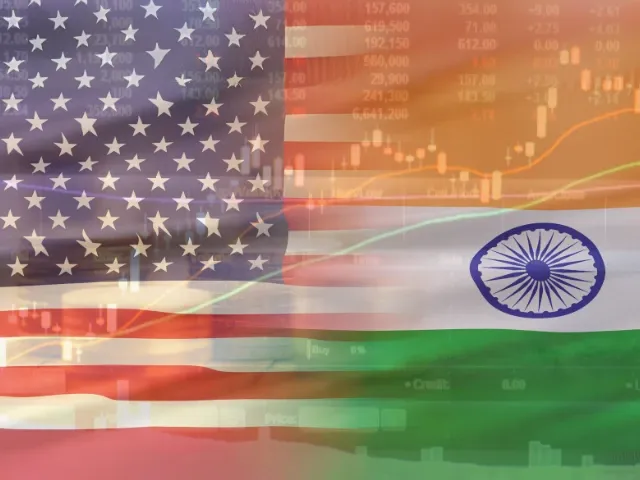


The relationship between India and the United States has deepened significantly in recent decades, with both nations becoming strategic partners. However, beneath the surface of this strong alliance, a complex web of trade tensions and disputes has emerged. For an Indian investor, understanding these trade dynamics is not just a matter of global affairs; it's a critical component of risk assessment and investment strategy. Recent announcements regarding tariffs and trade barriers have sent ripples through the markets, making it imperative to analyze the "why" and "what next" of this evolving situation.
Let's delve into the core issues driving the India-US trade friction, its potential impact on the Indian economy and markets, and how investors can navigate this new landscape.
The recent escalation in trade tensions is not an isolated event. It stems from long-standing disagreements and a clash of economic philosophies. From the US perspective, the main points of contention often revolve around:
In response, the Indian government has maintained its stance, prioritizing national interests and strategic autonomy. The government emphasizes the need to protect its vast agricultural sector and MSMEs, which are crucial for employment and economic stability. India’s stance is rooted in its sovereign right to set its own policies to protect its economy and its people.
The imposition of tariffs by the US is not a blanket measure; its effects are felt most acutely by specific sectors that form the backbone of India's export economy to the US. With a 25% tariff being imposed on all Indian goods, the following sectors are likely to feel the heat:
India is a global powerhouse in generic drug manufacturing, and the US is its largest market, accounting for a significant portion of its pharmaceutical exports. The new tariffs could raise the cost of Indian-made generic drugs in the US, potentially affecting the competitiveness of Indian pharma companies and squeezing their profit margins. This could lead to a short-term correction in the stock prices of major pharmaceutical companies and create uncertainty in the sector.
These are highly labour-intensive sectors that employ millions of people in India. The US is a primary destination for Indian gems, jewellery, and textile products. A 25% tariff makes these Indian goods more expensive for American buyers, potentially shifting demand to other countries like Vietnam or Bangladesh, which may face lower tariffs. This could lead to a decline in export orders and put pressure on the profitability of companies in these sectors.
While India’s exports of finished electronics to the US are growing, particularly in the smartphone segment, the tariffs could disrupt this promising growth story. Many global companies, including giants like Apple, have been expanding their manufacturing in India as part of a China-plus-one strategy. The tariffs could complicate these supply chains and make Indian-assembled products less attractive. Similarly, while not directly impacted by goods tariffs, the overall climate of trade tension can create uncertainty for the IT services sector, which heavily relies on business from the US.
The trade tensions don't just affect specific companies; they can have a broader impact on the Indian economy and financial markets.
For investors, the current trade environment calls for a calm and calculated approach, not panic.
Frequently Asked Questions
1. How do these trade tensions affect the average Indian investor?
These tensions can create market volatility, affecting the stock prices of companies, particularly those with significant exposure to the US market. They can also lead to currency fluctuations, which may impact inflation and the cost of imports.
2. Is India at a disadvantage in these negotiations?
India is a major global economic power with a rapidly growing market, giving it significant leverage. The Indian government has shown a clear resolve to protect its national interests, including the welfare of farmers and MSMEs. The ongoing negotiations are a reflection of both countries trying to secure the best possible terms for their respective economies.
3. What is the role of the Indian government and regulators like SEBI in this?
The government is engaged in diplomatic negotiations to find a mutually beneficial solution. Meanwhile, SEBI ensures market integrity and stability, putting in place regulations to prevent market manipulation and protect retail investors during periods of heightened volatility.
4. Should I sell my shares of export-oriented companies?
Panic selling is often the wrong move. Instead, analyze your portfolio. If a company has strong fundamentals, a diversified revenue stream, and a robust business model, it is likely to recover. Consider a long-term perspective rather than reacting to short-term news cycles.
The current trade friction between India and the US is a complex challenge, but it is also a reminder that global markets are interconnected and subject to geopolitical forces. For investors, this environment underscores the importance of a well-researched, disciplined, and long-term investment strategy.
At Swastika Investmart, we provide the expertise and tools to help you make sense of these complex market dynamics. Our SEBI-registered team of research analysts offers insightful reports and market commentary, helping you identify opportunities and risks in a volatile landscape. We are committed to investor education, empowering you with the knowledge to make informed decisions and build a resilient portfolio that can withstand any market challenge.


Trust Our Expert Picks
for Your Investments!



